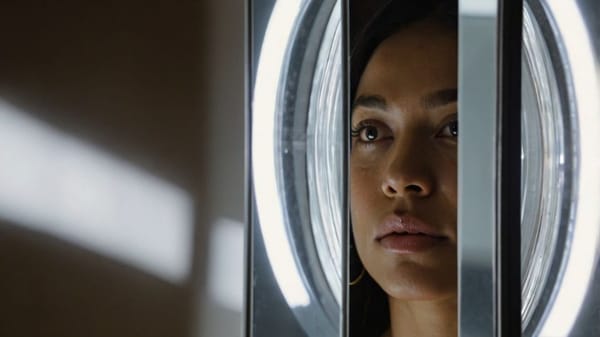The Impact of Digital Detoxing on Workplace Mindfulness
Discover how a digital detox enhances workplace mindfulness by reducing stress, improving focus, and fostering meaningful in-person interactions.

Is your focus under siege from constant pings and notifications? The digital world demands attention at all hours, draining your energy and making deep work feel impossible.
This relentless cycle fuels stress, scatters focus, and leaves professionals feeling perpetually overwhelmed. A digital detox isn’t about ditching technology—it’s about reclaiming control.
By setting boundaries and stepping away with intention, you sharpen focus, boost resilience, and create space for more meaningful engagement. The key isn’t less technology, but smarter use of it.
The Science of Digital Overload
Excessive screen time doesn't just wear you out—it rewires your brain. Neuroscience shows that constant digital stimulation spikes cortisol levels, the stress hormone responsible for mental fatigue.
Every notification pulls your attention away, fragmenting focus and reducing your ability to think deeply. Over time, this overstimulation diminishes cognitive function, making decisions harder and creativity sluggish.
When employees struggle to concentrate, productivity plummets, and workplace stress soars.
The Attention Deficit Crisis
Our brains aren’t built for the level of digital input we consume daily.
Research suggests that frequent task-switching—jumping between emails, chats, and notifications—lowers IQ, impairs memory retention, and reduces cognitive endurance.
Unlike deep work, which strengthens neural pathways for concentration, digital distractions erode our ability to focus for extended periods.

How Digital Fatigue Impacts Mental Health
Beyond the workplace, excessive digital consumption can lead to anxiety, irritability, and emotional exhaustion.
The dopamine-driven feedback loop created by social media and email notifications fuels addictive behaviors that keep professionals perpetually connected, blurring the line between work and personal life.
Over time, this leads to burnout, reduced motivation, and disengagement from meaningful tasks.
How a Digital Detox Elevates Workplace Mindfulness
Mindfulness at work isn’t just about meditation or breathing exercises—it’s about cultivating intentional focus in a world designed to distract.
A digital detox creates the mental space needed for deeper engagement, reducing stress while enhancing overall well-being.
Unlocking Deep Focus
Frequent digital interruptions prevent the brain from entering a state of flow—the sweet spot where productivity and creativity thrive.
By setting intentional screen-free periods, employees improve information retention, complete tasks more efficiently, and engage more meaningfully with their work.
Without digital distractions, the mind can sustain attention longer, leading to improved problem-solving and sharper decision-making.
Resetting Stress Levels
Continuous connectivity triggers a fight-or-flight response, keeping your brain on high alert. Stepping away from screens resets the nervous system, reducing anxiety and improving emotional regulation.
Plus, minimizing blue light exposure before bed enhances sleep quality, leading to better energy and sharper decision-making.
Studies show that employees who take regular digital breaks report lower stress levels, improved mood, and higher overall job satisfaction.
Reclaiming Presence
Ever been in a meeting where everyone is half-listening, eyes glued to their screens? A mindful digital detox fosters real engagement.
Screen-free conversations strengthen collaboration, encourage active listening, and build stronger professional relationships.
When employees commit to being fully present, discussions become more productive, misunderstandings decrease, and team cohesion improves.
Boosting Creativity and Problem-Solving
Innovation thrives when the brain has space to wander. Without constant digital input, new ideas emerge more easily.
Non-digital activities like journaling, reading, or whiteboarding activate different parts of the brain, leading to fresh insights and more effective problem-solving.
Many of history’s greatest thinkers, from Einstein to Steve Jobs, emphasized the importance of unplugging to allow creativity to flourish.
Rebuilding Digital Boundaries
One of the biggest challenges in modern work culture is the expectation of 24/7 availability. Without clear boundaries, professionals struggle to disconnect, leading to chronic stress and reduced work-life balance.
Organizations that encourage structured digital detoxing empower employees to take control of their time, reducing burnout and enhancing overall job satisfaction.
Strategies to Weave Digital Detoxing into Work Culture
Turning digital mindfulness into a workplace norm requires more than personal effort—it needs a culture that supports intentional disconnection.
Organizations that prioritize digital wellness empower employees to regain focus, reduce stress, and foster more meaningful collaboration.
Create Screen-Free Zones
Designate areas where employees can disconnect and recharge. A space dedicated to reflection, brainstorming, or simply unwinding without screens fosters mental clarity and balance.
Whether it's a quiet lounge, an outdoor patio, or a tech-free break room, having a dedicated space signals that mindfulness is a workplace priority.
Implement Scheduled Digital Breaks
Encourage short, intentional breaks away from screens throughout the day. Even five minutes of movement without a phone clears mental fog, while outdoor breaks amplify mindfulness by reducing stress and improving mood.
Some companies have implemented "focus hours" where employees turn off notifications and emails to fully engage in deep work.
Tame the Notification Frenzy
Help employees reclaim focus by setting notification boundaries. Simple changes—like disabling non-essential alerts or using "Do Not Disturb" modes—significantly cut down distractions and boost engagement.
Training teams to batch-process emails rather than react to each one immediately can also improve efficiency and reduce digital overwhelm.
Promote Analog Alternatives
Encourage tools that reduce digital dependency. Handwritten to-do lists, whiteboards for collaboration, and printed reading materials improve recall, minimize screen fatigue, and promote intentional focus.
Many professionals find that physically writing notes enhances comprehension and retention better than typing.
Lead by Example
Mindful digital habits start at the top. Leaders who embrace digital detox strategies—whether through screen-free meetings or mindful email practices—set the tone for a culture that values focus and well-being.
When managers model healthy boundaries, such as logging off after work hours or prioritizing in-person communication, employees feel empowered to do the same.
Final Thoughts: Take Back Your Attention
Mindfulness in the digital age isn't about rejecting technology; it's about using it with intention. By setting boundaries, prioritizing deep work, and fostering real human connection, employees can regain control over their focus and energy.
Start today: silence non-essential notifications, take a five-minute break without your phone, or step into a meeting fully present.
Small shifts create lasting change—and a more mindful, productive work environment. Companies that embrace digital mindfulness will see not just better performance, but also happier, more engaged employees.




